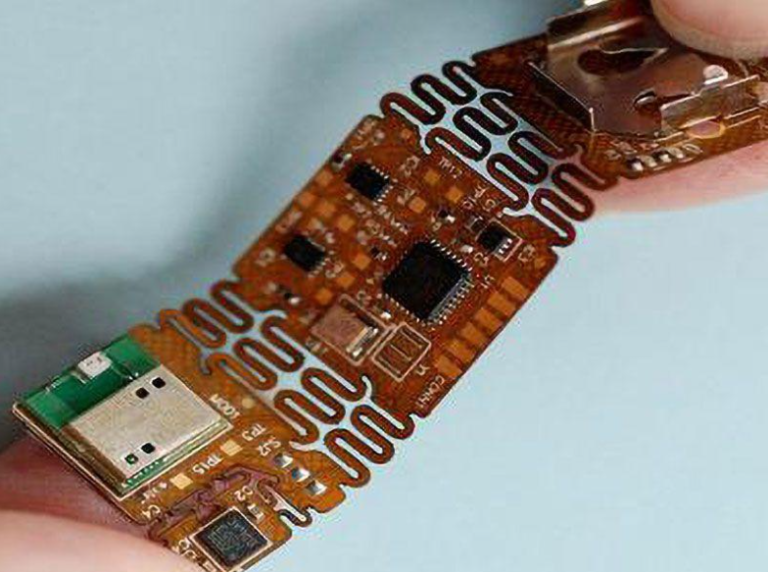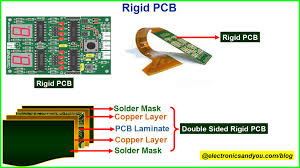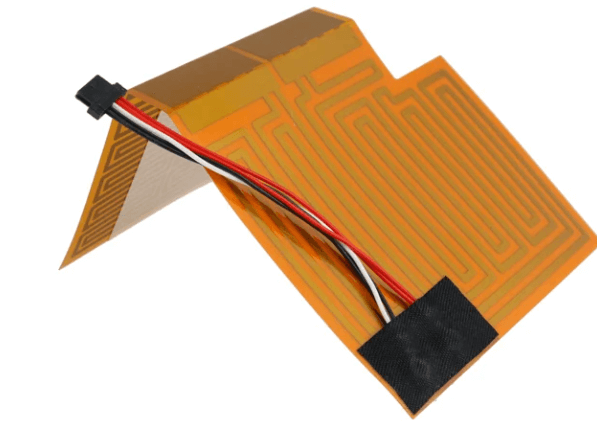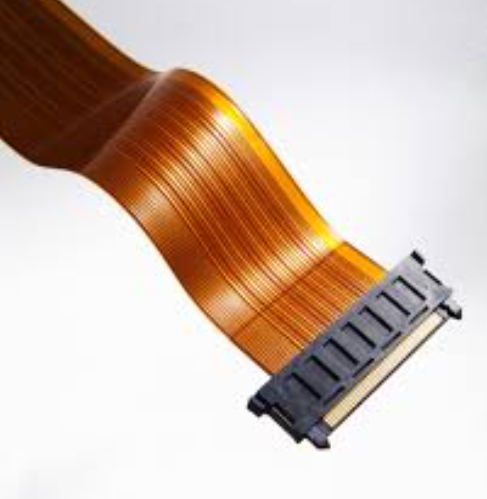bend radius flex pcb
Innovations In Benchmark PCB Manufacturing Techniques
Benchmark PCB manufacturing has undergone significant advancements in recent years, driven by the need for higher performance, greater reliability, and more efficient production processes.
One of the most notable innovations in this field is the development of high-density interconnect (HDI) technology.
HDI PCBs are characterized by their finer lines and spaces, smaller vias, and higher connection pad density. This technology allows for more complex and compact designs, which are essential for modern electronic devices such as smartphones, tablets, and wearable technology. The use of microvias, which are significantly smaller than traditional vias, is a key feature of HDI technology, enabling the creation of multi-layered boards with enhanced electrical performance.
In addition to HDI technology, the adoption of advanced materials has also played a crucial role in the evolution of PCB manufacturing.
Traditional PCBs are typically made from materials such as FR-4, a composite of woven fiberglass cloth with an epoxy resin binder. However, the demand for higher performance and reliability has led to the exploration of alternative materials. For instance, the use of polyimide, a flexible and heat-resistant polymer, has become increasingly popular. Polyimide-based PCBs offer superior thermal stability and mechanical flexibility, making them ideal for applications in aerospace, automotive, and medical devices.
Another significant innovation in benchmark PCB manufacturing is the implementation of additive manufacturing techniques, commonly known as 3D printing.
This approach allows for the creation of complex PCB structures that would be difficult or impossible to achieve with traditional subtractive methods. Additive manufacturing enables the precise deposition of conductive and insulating materials layer by layer, resulting in highly customized and intricate designs. This technique not only reduces material waste but also shortens production times, making it a cost-effective solution for prototyping and small-scale production runs.
Moreover, the integration of advanced inspection and testing methods has greatly enhanced the quality and reliability of PCBs.
Automated optical inspection (AOI) and automated X-ray inspection (AXI) systems are now widely used to detect defects such as solder joint issues, misaligned components, and internal structural flaws. These systems provide high-resolution imaging and real-time analysis, ensuring that any defects are identified and addressed early in the manufacturing process. Additionally, the use of in-circuit testing (ICT) and functional testing further ensures that the final product meets the required specifications and performance standards.
Furthermore, the push towards environmentally friendly manufacturing practices has led to the development of lead-free soldering techniques.
Traditional soldering processes often involve the use of lead-based solders, which pose significant health and environmental risks. In response to regulatory requirements and growing environmental awareness, manufacturers have adopted lead-free soldering methods that use alternative materials such as tin-silver-copper (SAC) alloys. These lead-free solders provide comparable performance to their lead-based counterparts while minimizing the environmental impact.
Lastly, the rise of Industry 4.0 and the Internet of Things (IoT) has brought about a new era of smart manufacturing in the PCB industry.
The integration of sensors, data analytics, and machine learning algorithms allows for real-time monitoring and optimization of the manufacturing process. This level of connectivity and automation not only improves efficiency and productivity but also enables predictive maintenance and quality control, reducing downtime and enhancing overall product quality.
In conclusion, the innovations in benchmark PCB manufacturing techniques have significantly transformed the industry, enabling the production of more complex, reliable, and environmentally friendly PCBs. From HDI technology and advanced materials to additive manufacturing and smart manufacturing practices, these advancements are paving the way for the next generation of electronic devices. As technology continues to evolve, it is likely that we will see even more groundbreaking developments in the field of PCB manufacturing.

The Role Of Quality Control In Benchmark PCB Production
In the realm of benchmark PCB manufacturing, quality control plays an indispensable role in ensuring the reliability and performance of printed circuit boards.
As the backbone of modern electronic devices, PCBs must adhere to stringent quality standards to meet the demands of various industries, from consumer electronics to aerospace. The meticulous process of quality control in PCB production encompasses several stages, each designed to identify and rectify potential defects, thereby guaranteeing the final product’s integrity.
Initially, the quality control process begins with the selection of raw materials.
High-quality substrates, copper foils, and other essential components are scrutinized to ensure they meet predefined specifications. This preliminary step is crucial, as the use of substandard materials can lead to failures in the final product. By implementing rigorous material inspection protocols, manufacturers can mitigate the risk of defects arising from the very foundation of the PCB.
Following material selection, the manufacturing process itself is subject to continuous monitoring.
Advanced techniques such as automated optical inspection (AOI) and X-ray inspection are employed to detect anomalies during various stages of production. AOI systems, for instance, utilize high-resolution cameras to capture images of the PCB and compare them against a predefined template. This allows for the identification of issues such as misaligned components, soldering defects, and other irregularities that could compromise the board’s functionality. Similarly, X-ray inspection provides a non-destructive means of examining the internal structure of the PCB, revealing hidden defects that might otherwise go unnoticed.
In addition to these automated methods, manual inspections are also integral to the quality control process.
Skilled technicians conduct visual inspections to identify defects that automated systems might miss. Their expertise and attention to detail are invaluable in ensuring that each PCB meets the highest standards of quality. Furthermore, functional testing is performed to verify that the PCB operates as intended. This involves subjecting the board to various electrical tests to confirm that all circuits are correctly connected and that the board performs its designated functions without error.
Moreover, environmental testing is conducted to assess the PCB’s durability under different conditions.
This includes thermal cycling, humidity exposure, and vibration testing, among others. By simulating real-world conditions, manufacturers can ensure that the PCB will maintain its performance and reliability throughout its intended lifespan. These tests are particularly critical for PCBs used in demanding applications, such as automotive or aerospace industries, where failure is not an option.
Throughout the entire quality control process, documentation and traceability are maintained to ensure accountability and continuous improvement.
Detailed records of inspections, tests, and any corrective actions taken are kept, allowing manufacturers to track the performance of their processes and identify areas for enhancement. This systematic approach not only helps in maintaining high-quality standards but also facilitates compliance with industry regulations and certifications.
In conclusion, the role of quality control in benchmark PCB production cannot be overstated. From the careful selection of raw materials to the rigorous inspection and testing of the final product, each step is designed to ensure that the PCBs meet the highest standards of quality and reliability. By employing a combination of advanced technologies and skilled human oversight, manufacturers can produce PCBs that perform flawlessly in their intended applications, thereby upholding the integrity of the devices they power.
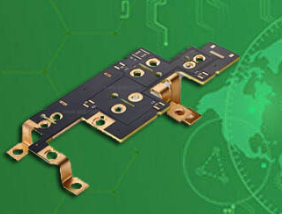
Cost-Effective Strategies For Benchmark PCB Manufacturing
In the realm of electronics, printed circuit boards (PCBs) serve as the backbone of virtually all electronic devices. As the demand for more sophisticated and compact devices grows, the need for cost-effective strategies in PCB manufacturing becomes increasingly critical. Benchmark PCB manufacturing, which refers to the process of producing high-quality PCBs that meet industry standards, requires a meticulous approach to balance cost and quality. Implementing cost-effective strategies without compromising on performance is essential for staying competitive in the market.
One of the primary strategies for cost-effective benchmark PCB manufacturing is optimizing the design phase.
A well-thought-out design can significantly reduce manufacturing costs. This involves using design for manufacturability (DFM) principles, which ensure that the PCB design is optimized for ease of manufacturing. By considering factors such as component placement, trace routing, and layer stack-up during the design phase, manufacturers can minimize errors and reduce the need for costly rework. Additionally, employing advanced design software tools can streamline the design process and enhance accuracy, further contributing to cost savings.
Another crucial aspect is material selection.
The choice of materials can have a substantial impact on both the cost and performance of the PCB. While high-quality materials are essential for ensuring reliability and durability, it is important to strike a balance between cost and performance. For instance, using materials with appropriate thermal and electrical properties that meet the specific requirements of the application can prevent over-engineering and unnecessary expenses. Moreover, sourcing materials from reputable suppliers who offer competitive pricing can also help in managing costs effectively.
Furthermore, leveraging economies of scale can be a powerful strategy in reducing manufacturing costs.
By increasing production volumes, manufacturers can benefit from bulk purchasing discounts on materials and components. This not only lowers the per-unit cost but also enhances production efficiency. However, it is essential to carefully forecast demand and manage inventory to avoid overproduction and excess inventory costs. Collaborating with reliable suppliers and establishing long-term partnerships can also contribute to more favorable pricing and consistent supply.
In addition to these strategies, adopting advanced manufacturing technologies can play a pivotal role in achieving cost-effective benchmark PCB manufacturing.
Automation and precision machinery, such as surface mount technology (SMT) equipment and automated optical inspection (AOI) systems, can significantly enhance production efficiency and reduce labor costs. These technologies ensure high precision and consistency, minimizing defects and rework. Moreover, investing in continuous improvement and staying abreast of technological advancements can lead to long-term cost savings and improved product quality.
Another important consideration is the implementation of stringent quality control measures.
Ensuring that each PCB meets the required standards and specifications is crucial for avoiding costly recalls and rework. Employing comprehensive testing and inspection protocols, such as in-circuit testing (ICT) and functional testing, can help identify and rectify issues early in the production process. This not only enhances product reliability but also reduces the likelihood of defects reaching the end customer, thereby saving costs associated with warranty claims and returns.
Lastly, effective project management and communication are vital for cost-effective benchmark PCB manufacturing.
Clear communication between design, engineering, and production teams can prevent misunderstandings and ensure that everyone is aligned with the project goals. Utilizing project management tools and methodologies can help in tracking progress, identifying potential bottlenecks, and making informed decisions to keep the project on schedule and within budget.
In conclusion, achieving cost-effective benchmark PCB manufacturing requires a multifaceted approach that encompasses optimized design, strategic material selection, leveraging economies of scale, adopting advanced technologies, stringent quality control, and effective project management. By implementing these strategies, manufacturers can produce high-quality PCBs that meet industry standards while maintaining competitive pricing, ultimately ensuring success in the dynamic electronics market.
Environmental Impact And Sustainability In Benchmark PCB Manufacturing
The environmental impact and sustainability of benchmark PCB manufacturing have become increasingly significant in recent years. As the demand for electronic devices continues to surge, the production of printed circuit boards (PCBs) has escalated correspondingly. This rise in production, however, brings with it a host of environmental concerns that necessitate a closer examination of the processes involved and the implementation of sustainable practices.
One of the primary environmental concerns in PCB manufacturing is the substantial use of hazardous chemicals.
These chemicals, including solvents, acids, and heavy metals, are integral to various stages of PCB production, such as etching, plating, and cleaning. The improper disposal of these substances can lead to soil and water contamination, posing severe risks to ecosystems and human health. Consequently, it is imperative for manufacturers to adopt stringent waste management protocols and invest in advanced treatment facilities to mitigate these risks.
In addition to chemical waste, the energy consumption associated with PCB manufacturing is another critical factor.
The production process is energy-intensive, involving high-temperature operations and prolonged use of machinery. This significant energy demand contributes to greenhouse gas emissions, exacerbating the global issue of climate change. To address this, manufacturers are increasingly turning to renewable energy sources and energy-efficient technologies. By integrating solar panels, wind turbines, and energy-efficient equipment into their operations, companies can significantly reduce their carbon footprint and promote a more sustainable manufacturing model.
Moreover, the sourcing of raw materials for PCB production also has environmental implications.
The extraction of metals such as copper, gold, and tin, which are essential components of PCBs, often results in habitat destruction, water pollution, and resource depletion. To combat these adverse effects, the industry is gradually shifting towards the use of recycled materials. Recycling not only conserves natural resources but also reduces the environmental burden associated with mining activities. Additionally, manufacturers are exploring alternative materials that are less harmful to the environment, thereby fostering innovation in sustainable PCB design.
Another aspect of sustainability in PCB manufacturing is the emphasis on reducing waste through efficient production techniques.
Lean manufacturing principles, which focus on minimizing waste and maximizing productivity, are being increasingly adopted. By optimizing production processes, manufacturers can reduce material wastage, lower energy consumption, and enhance overall efficiency. Furthermore, the implementation of closed-loop systems, where waste materials are reintroduced into the production cycle, can further diminish the environmental impact.
The role of regulatory frameworks and industry standards cannot be overlooked in promoting sustainability in PCB manufacturing.
Governments and international organizations have established guidelines and regulations aimed at reducing the environmental footprint of electronic manufacturing. Compliance with these regulations not only ensures environmental protection but also enhances the credibility and marketability of manufacturers. Certifications such as ISO 14001, which focuses on environmental management systems, serve as benchmarks for companies striving to achieve sustainable operations.
In conclusion, the environmental impact and sustainability of benchmark PCB manufacturing are multifaceted issues that require a comprehensive approach.
By addressing chemical waste, energy consumption, raw material sourcing, and production efficiency, manufacturers can significantly mitigate their environmental footprint. The adoption of renewable energy, recycling initiatives, and lean manufacturing principles, coupled with adherence to regulatory standards, paves the way for a more sustainable future in PCB manufacturing. As the industry continues to evolve, the commitment to environmental stewardship will be paramount in ensuring the long-term viability and success of PCB production.

